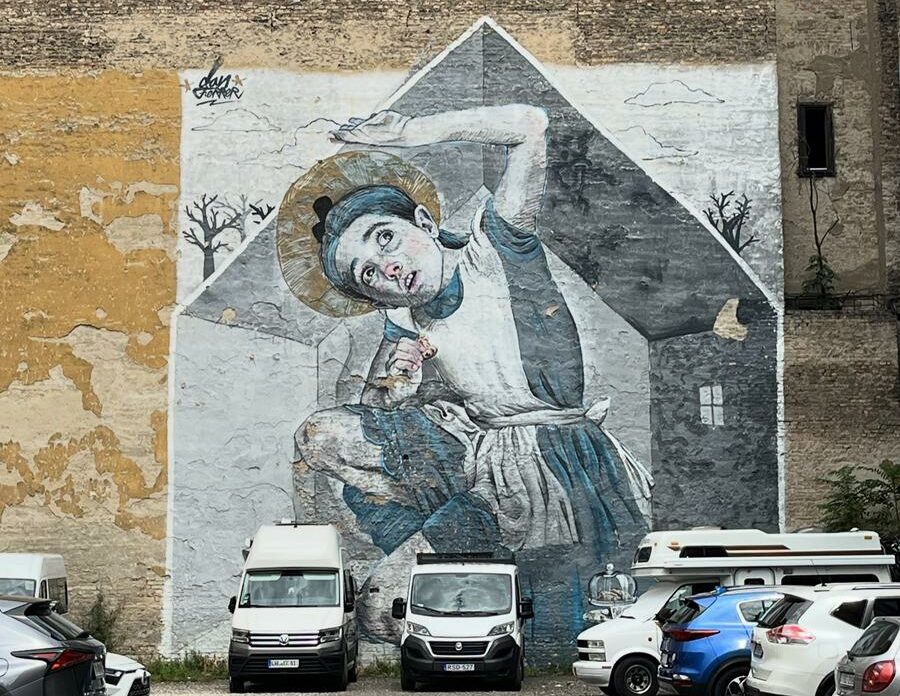Hungarian culture today: modern trends vs. tradition

Sponsored content
In Hungary, history is not only remembered but also lived. Within the cobbled streets and medieval architecture, as well as the age-old recipes, wealth reflects a culture that still commands much of everyday life. But although modernization has, perhaps in recent years, entered Hungary, so have elements of Western culture, as well as a moving digital world. Thus, these unique hybridities burst from the fountains of traditional roots, coursing through life in the two-watered country.
Foundation of Tradition
Hungarian culture firmly stands on its tradition that has been passed through generation to generation. It is mainly best reserved for the country’s towns and villages. Folk songs, religious songs, classical music, and handmade crafts become integrated daily in the lives of Hungarians.
Among them, the carnaval busóárás in Mohàcs and Matyós Fesztivál—the festival of traditional Hungarian clothing, music, and dance—are events considered exceptional. Much of the time, these events are complemented by rich-tasting foods such as gulyás, pörkölt, and some other delicious foods that are luring tourists into first-hand experiences of the cultural heritage of Hungary.
And of course, this is connected with the family. Most small towns have multigenerational families under one roof, and a Sunday lunch remains family time—an essential ritual among Hungarians.
A Youth Culture in Transition
The youth culture has gone through, and is still going through, the transition. In cities such as Budapest and Debrecen, global influences are gradually overtaking local influences for the younger generations. With the help of digital ways for streaming on YouTube, TikTok, and Netflix, Hungarian youth are fusing their local identities with the global influences of fashion, music, and lifestyle.
Hip-hop, K-pop, and indie rock—think trends in their playlists; wardrobe-wise, thrift store streetwear and sneaker culture are removing the traditional folk garment—stuff Hungarians won’t wear these days. A growing acceptance of progressive discourse around gender, identity, and self-expression is being witnessed among Hungarian youth—discourses sometimes denied by the older generations’ contingent conservative outlook.
With their open-mindedness toward new ideas, Erasmus students shift cultural and ideological trends in Hungary through new habits and aspirations that impact local emerging identities. These influences are then one layer of Hungary’s evolving identity.
The Urban-Rural Cultural Divide
Cultural availability is much more evident in Budapest and the urban centers than in her countryside. This city, for example, is as much a world city today as it is a city with diversity, creativity, and modern energy. Just look around at contemporary art galleries, fusion restaurants, and international pop-ups, and it becomes obvious that the city paints a cosmopolitan picture.
On the contrary, rural areas are where tradition is cultivated. Weddings are celebrated here with folk music and garments over long days. Gender roles, religion, or work ethics can also converse about relatively conservative views.
This sometimes creates a gulf, but it also gives Hungary the ability to carry forward its heritage while continuing to mold itself to a new world.

Effects of Globalization on Culture
Hungary’s entry into the European Union in 2004 has allowed the country an unprecedented opening towards world ideas, products, and services. EU grants provide funds for infrastructure and education improvements—learning foreign languages, technology, and foreign cultures.
This provided energy by the tourists and the foreign element who came to settle in Budapest. Coffee culture, plant-based cafes, yoga studios, co-working spaces, etc. are by-products of a city bringing up new issues of wellness, sustainability, and independent entrepreneurship.
With such events around the world and international competitions alongside the digital phenomena like the Tongits tournament by Gamezone, another arena exists where Hungarians have enthusiastic participants, giving ample evidence that entertainment really went global in the most traditionally inward societies.
Blending the Old and New
In a much more productive way, Hungarians innovate through traditions. They fuse culture, where the most visible parts of it are changes in fashion, gastronomy, or arts. There are new generations of Hungarian chefs who reinvent traditional dishes but apply the concept of organic ingredients plus modern techniques. In a string of new restaurants in Budapest, duck confit is prepared garnished with paprika mousse or gulyás foam—an interesting sign of conservation updated.
Young creators in the fields of music and visual arts take in motifs from Hungarian embroidery and folklore and unite that same source of inspiration with their final outputs—photography or murals in public spaces—and within the hip-hop scene. There are folk melodies being sampled in the making of lo-fi beats and techno sets, representative of cross-cultural experience and feeling real and forward.
Thus, among the hybrid products of popular culture is capturing a viral society status in sites like News To Go, where Hungarian culture is defined in formats that younger, tech-savvy audiences will soon swallow.
Cultural Preservation in the Age of Modernity
And yet, time transforms into an unceasing march; many institutions work to contribute to this cultural heritage legacy in Hungary. There are government grants, backed by the EU, for projects related to cultural heritage and local nonprofit organizations that fundraise for traditional festival workshops and educational programs in traditional crafts, music, and storytelling.
Hungarian folk art museums and cultural centers still inspire young hands with their exceptionality in embroidery, pottery, and dance. Many Hungarian kindergartens and primary schools include “folk days,” when pupils come dressed in traditional costumes and perform folk songs—and ensure that roots are not lost.
Indeed, the Hungarian Heritage House in Budapest plays an important role by constantly relating national traditions to contemporary contexts through various programs.
Changing the Meaning of What it Means to be Hungarian
Today, cultural tension is not addressed as a clash between modern values and traditional ones, but as a dialogue. Many young Hungarians now understand that one need not choose between “old” and “new,” instead balancing a hybrid identity that allows for being both profoundly Hungarian and well aware of the outside world.
Visible already in the popularity of folk-themed festivals presenting a modern spin, such as wine fests featuring DJ performances and the like, such phenomena include fashion where models display traditional motifs working within streetwear silhouettes.
Accordingly, as has been featured in outlets such as Daily News Hungary, national identity redefinition goes on now within multiple facets. Indeed, it reflects larger processual norms in which cultures have become more dynamic instead of static.
Conclusion: A Cultural Evolution in Progress
Hungary’s cultural territory does not fade; it changes. It is traditional still alive—from rural villages to urban studios—but incorporated into new influences, values, and technologies.
City life from the countries has been redefined by Hungarians into its own. A transformation that sometimes creates waves of resistance, but at the same time, it opens up access to richer and more inclusive forms of national identity.
In the fast world of news and in the global culture “tap,” Hungary is one great example of the nation proudly holding onto roots while looking ahead. Whether being read in Budapest news or experienced walking along the street art festival in the city’s center, one thing is quite evident: the cultural story in Hungary doesn’t end. It’s just going to its next chapter.
Disclaimer: the author(s) of the sponsored article(s) are solely responsible for any opinions expressed or offers made. These opinions do not necessarily reflect the official position of Daily News Hungary, and the editorial staff cannot be held responsible for their veracity.





